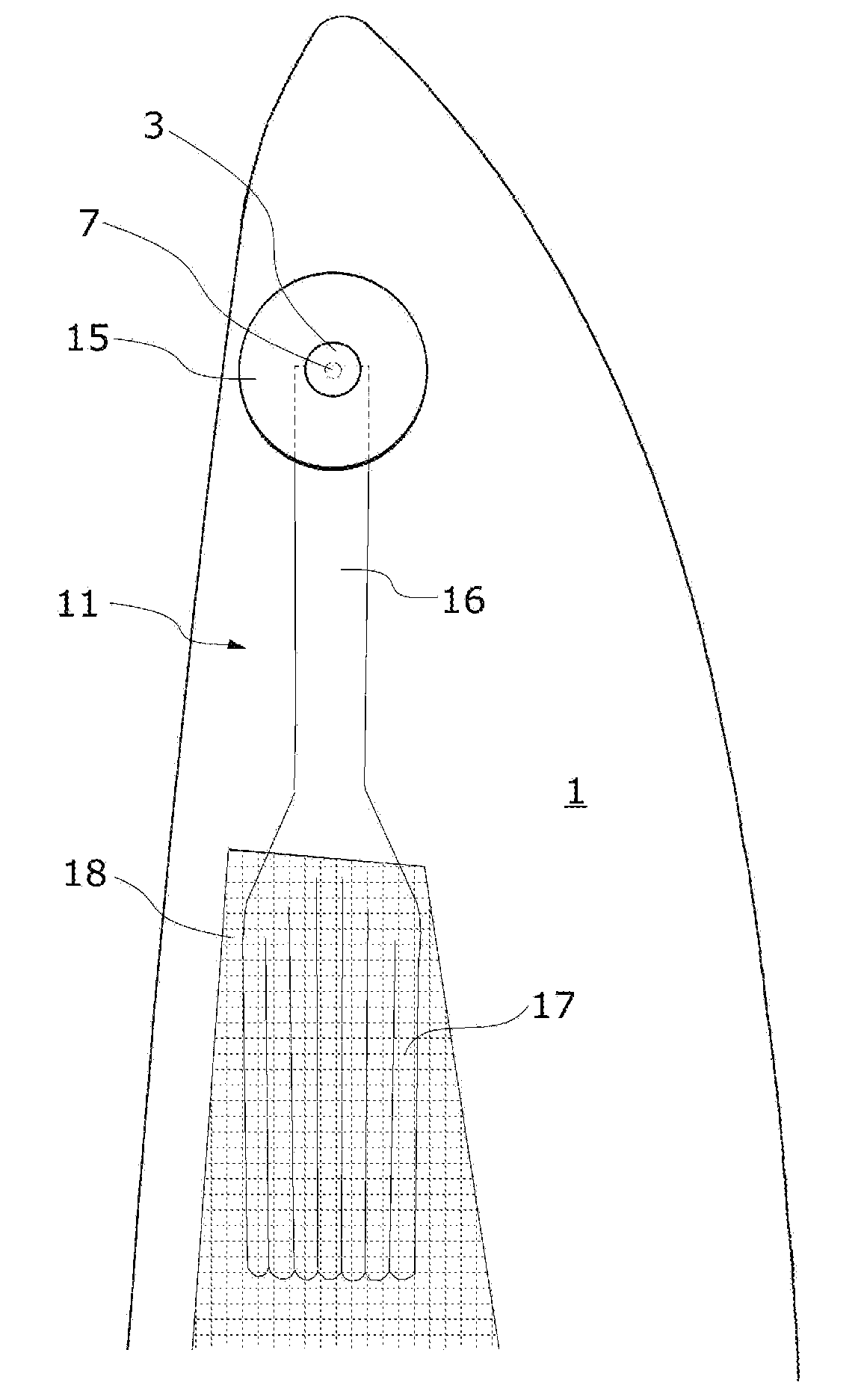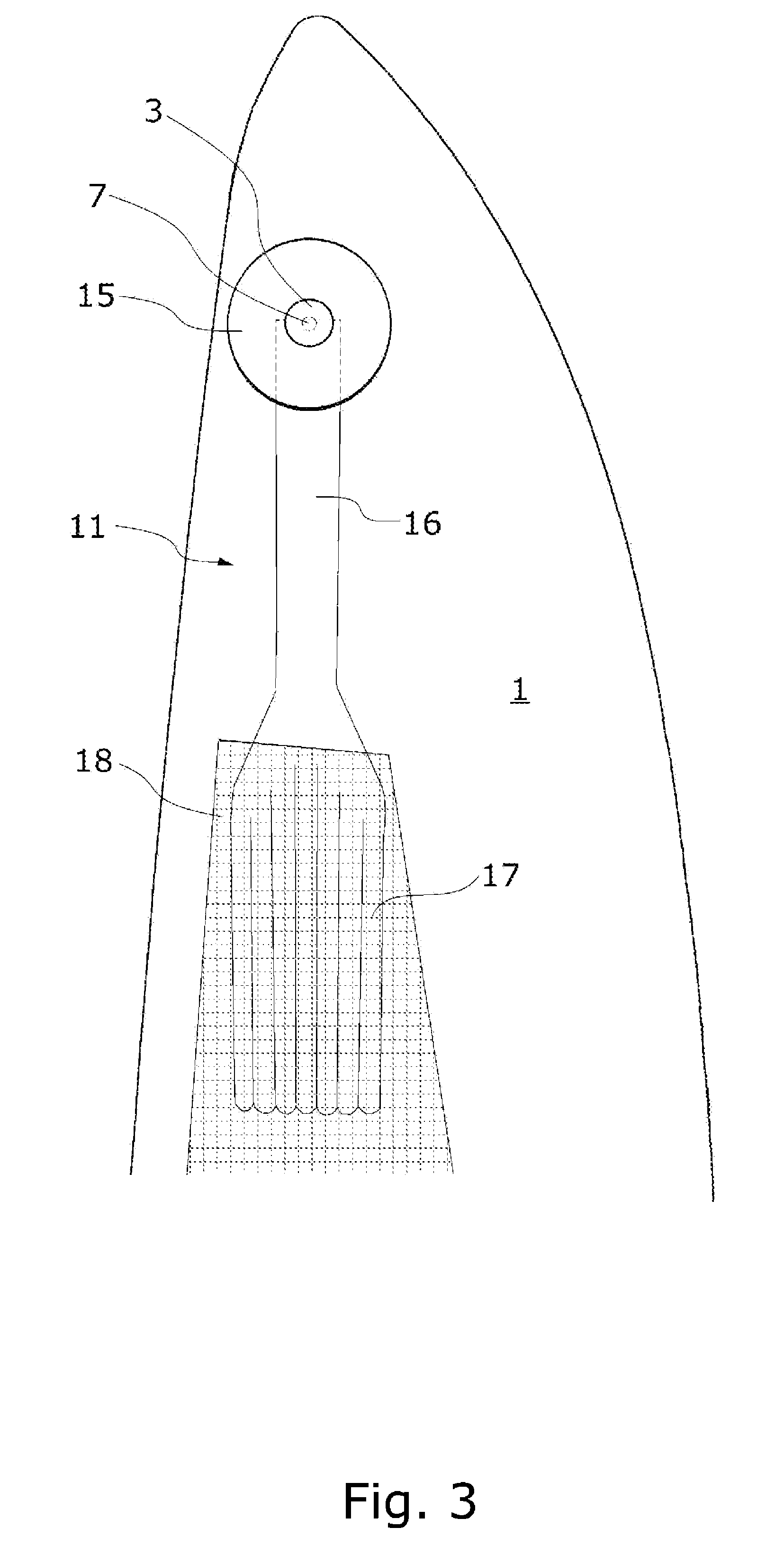Wind turbine rotor blade and method of manufacturing such rotor blade
a technology of wind turbines and blades, which is applied in the direction of wind motor components, non-positive displacement fluid engines, liquid fuel engine components, etc., can solve the problems of blade surface shells being ripped apart, composite material delamination or incineration, heating and melting of metallic components,
- Summary
- Abstract
- Description
- Claims
- Application Information
AI Technical Summary
Benefits of technology
Problems solved by technology
Method used
Image
Examples
Embodiment Construction
[0059]FIG. 1 is a plane view of a wind turbine rotor blade amongst other features also being provided in the tip of the blade with a lightning protection system as shown and described with reference to FIGS. 3-4. The blade may have a substantial length, i.e. a length of up to 50 m or even more. Blades having such magnitude may be manufactured by using manufacturing techniques that are alternative to the ones commonly used, e.g. by using wood, carbon fibres or other lightweight elements for obtaining a proper rigidity and strength together with the relative heavyweight resin also constituting part of the blade. Traditional manufacturing methods may also be employed for manufacturing the blade
[0060]FIG. 2 is a cross-section of a section of the tip of the wind turbine rotor blade, the cross-section being along a plane extending substantially transversely to and parallel with a rotor plane P of the blade. The rotor plane P of the blade is the plane in which the blade performs rotation, ...
PUM
 Login to View More
Login to View More Abstract
Description
Claims
Application Information
 Login to View More
Login to View More - R&D
- Intellectual Property
- Life Sciences
- Materials
- Tech Scout
- Unparalleled Data Quality
- Higher Quality Content
- 60% Fewer Hallucinations
Browse by: Latest US Patents, China's latest patents, Technical Efficacy Thesaurus, Application Domain, Technology Topic, Popular Technical Reports.
© 2025 PatSnap. All rights reserved.Legal|Privacy policy|Modern Slavery Act Transparency Statement|Sitemap|About US| Contact US: help@patsnap.com



